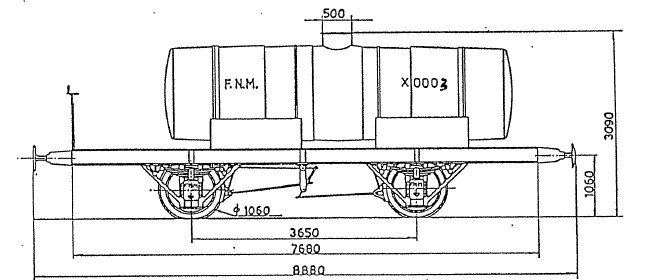The Ferrovie Nord water transport wagons were used to supply drinking water to remote gatehouses along the line, which were not served by aqueducts, springs or wells. This necessity led FNM to equip itself from as early as 1883 with an X 0001 tank wagon. Other tank wagons were built in 1903 in Belgium by Metallurgique de Nivelles. The X 0003 wagon still exists today.
It was restored and fitted with a pump for supplying water to historic steam locomotives. It is occasionally included in historic train compositions. Water cranes for supplying steam locomotives with water have now disappeared from FNM stations. The wagon is fitted only with a hand brake. This was operated by the brakeman in response to signals from the driver. Or it is locked as a parking brake during stops. This is a 2-axle vehicle with spoked wheels, leaf spring suspension, and a steel frame with a flatbed partially covered with oak boards. A tank of thick riveted metal plates sits on the chassis, anchored by strong tie-rods.


